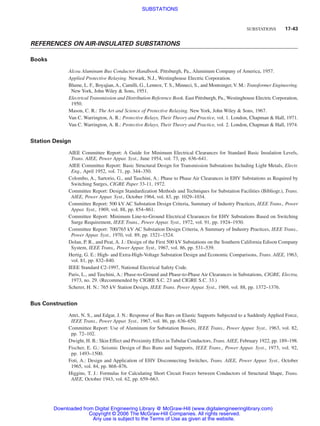This document discusses different types of substation designs, including their functions, design objectives, and reliability comparisons. It describes common substation bus schemes such as single bus, main and transfer bus, double bus single breaker, double bus double breaker, ring bus, and breaker and a half. Each scheme has advantages and disadvantages in terms of reliability, flexibility, safety, and cost. The document provides diagrams to illustrate the different schemes and compares their reliability and ability to maintain service during maintenance or failures.



















































